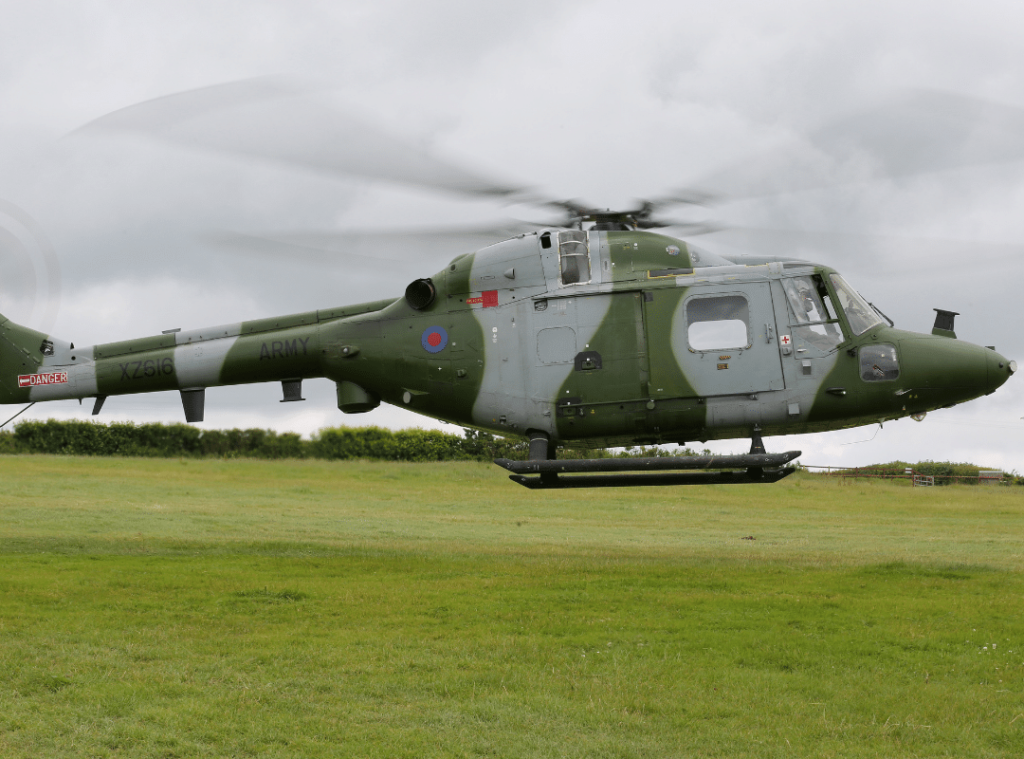
Ever watched a helicopter flip through the air and wondered, “Can helicopters really fly upside down?” It’s one of those questions that mixes awe with a touch of disbelief. The truth is both thrilling and surprising. While conventional helicopters are bound by some serious aerodynamic rules, certain aerobatic helicopters break those limits—sort of. Welcome to the high-flying, loop-de-loop world of helicopters that can “fly” upside down.
Introduction to Helicopter Aerobatics
Helicopter aerobatics is a niche form of aerial stunt flying, usually seen in military demonstrations and air shows. These helicopters perform maneuvers that look similar to those of fighter jets—flips, rolls, and dramatic loops—but they work under a completely different aerodynamic principle.
Unlike fixed-wing aircraft, helicopters rely on rotating blades (rotors) to generate lift. This unique design makes aerobatic maneuvers exponentially more complex. Only specially designed models, like the Red Bull BO-105 or the Westland Lynx, are equipped to pull off these feats.
The Myth of Full Inverted Flight
Let’s bust the myth early: most helicopters cannot sustain full inverted flight. Why? Because their lift depends on rotor blades pushing air downward. Flip the chopper completely upside down, and that airflow is disrupted, often reversed, which typically stalls lift and control.
But what about those cool upside-down helicopter videos? They’re real—sort of. The aircraft flips through inverted positions during aerobatic loops and rolls but doesn’t hang there for long. They pass through the inverted phase swiftly, with enough momentum and power to maintain flight.
Understanding Rotor Mechanics
Rotors are the lifeblood of a helicopter. Traditional helicopters use a main rotor and tail rotor configuration. The blades are shaped to create lift when spinning in one direction. When inverted, the entire rotor system has to withstand immense forces it was never designed to handle.
To perform aerobatics, the rotor system must have:
- Symmetrical blade design
- Reinforced hinges and linkages
- Higher RPM tolerance
- Precision pitch control systems
These upgrades allow brief inverted movement without catastrophic failure.
The Role of Collective and Cyclic Pitch
In helicopter lingo, the collective pitch changes the angle of all rotor blades to control ascent or descent. The cyclic pitch, on the other hand, tilts the rotor disk in specific directions—forward, back, left, or right.
During aerobatic flips:
- Cyclic input initiates the roll or loop
- Collective is adjusted dynamically to maintain lift during the maneuver
- Timing is crucial—too slow, and the chopper loses lift; too fast, and you overload the rotor system
The combined control of pitch angles during these stunts is what makes upside-down maneuvers possible.
The Laws of Aerodynamics at Play
Unlike jets, helicopters don’t have wings that provide lift regardless of orientation. They depend entirely on rotational airflow.
When flipped:
- Lift temporarily reverses
- Gravity fights rotor momentum
- Inertia keeps motion going (if initiated properly)
That’s why aerobatic helicopters only stay upside down for a few seconds—they don’t have enough thrust or design to fight gravity in that state for long.
Helicopters That Can Do Loops and Rolls
Only a few helicopter models can handle the forces involved in aerobatics. Here are the most famous ones:
Westland Lynx – Record Breaker
Originally a British military chopper, the Westland Lynx holds the world record for helicopter speed. But that’s not all—it was also the first chopper to successfully perform a full backward loop.
Engineering Highlights:
- Semi-rigid rotor system
- Strong titanium blade roots
- Enhanced flight controls for rapid pitch changes
Red Bull BO-105 – The Stunt King
The Red Bull BO-105, flown by aerobatic legend Chuck Aaron, is the poster child of upside-down helicopter flight. He custom-modified this model to perform barrel rolls, loops, and nose dives at air shows worldwide.
Why It Works:
- Rigid rotor system that doesn’t flap like traditional designs
- Even weight distribution
- Specialized hydraulics for responsive cyclic control
How Are Aerobatic Copters Engineered Differently?
Designing a helicopter to execute inverted flight maneuvers is no small feat. Engineers must overhaul many components to handle the unique stresses of aerobatics. Let’s explore what sets these specialized helicopters apart from standard models.
1. Rigid Rotor Systems
Unlike conventional helicopters that use semi-rigid or fully articulated rotors, aerobatic helicopters are equipped with rigid rotor systems. These don’t flap or lead-lag excessively, which offers:
- Improved maneuverability
- Better response to cyclic input
- Reduced delay in control feedback
This rigidity allows the pilot to maintain precise control during high-speed flips and rolls.
2. Symmetrical Blade Airfoils
Standard helicopters use asymmetrical blades designed for upward lift in one direction. Aerobatic copters need symmetrical airfoil blades, which:
- Generate lift in both directions (up and down)
- Reduce instability during inverted flight
- Allow smoother transitions through vertical and inverted positions
3. Reinforced Drive Systems
High-G maneuvers put extreme pressure on transmission systems. Aerobatic helicopters feature:
- Strengthened gearboxes
- Redundant safety couplings
- Increased torque handling
This ensures the blades keep spinning reliably under load, even when inverted.
4. Advanced Flight Control Systems
Precision is everything in aerobatic flight. Modern aerobatic helicopters often incorporate:
- Fly-by-wire controls
- Computer-assisted stability systems
- Real-time pitch adjustment algorithms
These advancements give pilots the confidence to push boundaries without risking catastrophic loss of control.
Challenges of Inverted Helicopter Flight
Flying upside down—even momentarily—is extremely risky. Here’s why:
Stress on Rotor Blades
Rotor blades face unnatural aerodynamic forces during inversion, risking:
- Blade bending or cracking
- Increased vibration
- Fatigue failures over time
Engineers run exhaustive tests to ensure blades can handle these extremes.
Pilot G-Forces
Inverted maneuvers subject pilots to serious G-forces, which can:
- Cause temporary vision loss
- Disorient rapid cyclic input
- Impair decision-making if untrained
Limited Duration
Even the best aerobatic helicopters can’t sustain upside-down flight for long. Momentum plays a bigger role than rotor thrust during inversion. Most stunts last only 2–3 seconds before the pilot must recover.
Do Military or Rescue Copters Ever Use This?
While it may sound like a secret maneuver, military and rescue helicopters do not use inverted flight in operations. Aerobatics serve one purpose in these domains: demonstration.
Military Use
- Aerobatic flights are used in airshows to showcase technology and pilot skill.
- Maneuvers like rolls or sharp dives help with evasion drills but not full loops.
Search & Rescue
- Stability, not aerobatics, is key in rescue missions.
- Sudden inversions would endanger passengers and equipment.
So, despite the spectacle, aerobatics are more about show than substance in real missions.
The Risk Factor: Safety and Training
Aerobatic helicopter pilots undergo some of the most rigorous training in aviation. They must master:
- Emergency recovery procedures
- Split-second decision-making
- Inverted flight simulations
Most of this training happens in virtual simulators before pilots are ever cleared to fly aerobatic missions.
Safety Measures
- Backup hydraulic systems
- Anti-torque redundancies
- Pre-flight rotor inspections
- Onboard diagnostics during flight
One small failure mid-stunt could mean disaster, so every detail is triple-checked.
Common Myths About Upside-Down Flight
Let’s clear the air on a few popular misconceptions:
| Myth | Reality |
|---|---|
| “All helicopters can fly upside down.” | False – only specialized models with modified systems can. |
| “It’s like flying a drone.” | Not at all – drones have multi-directional thrust; helicopters rely on lift from blades. |
| “Upside-down flight is common in rescue missions.” | Nope – it’s strictly for demonstrations and stunts. |
| “It’s a CGI trick in movies.” | Many are real but captured from specific angles to exaggerate effect. |
The Role of Air Shows and Public Perception
Air shows have been instrumental in popularizing the idea that helicopters can fly upside down. These events serve two main purposes:
- Entertainment: Wow the crowd with loops, rolls, and dramatic descents.
- Education: Showcase the engineering brilliance behind modern rotorcraft.
Pilots like Chuck Aaron have inspired a new generation of enthusiasts with daring displays of inverted flight.
Comparisons to Fixed-Wing Aerobatics
Fixed-wing aircraft (like fighter jets) are inherently better suited for inverted flight due to:
- Aerodynamic wings that generate lift in both orientations
- Faster airspeeds to maintain control
- Thrust-vectoring engines that aid maneuverability
Helicopters, by contrast, have:
- Slower speeds
- More sensitive controls
- Gravity-dependent lift systems
That makes their aerobatic performances all the more impressive—and difficult.
Future Tech: Could Fully Inverted Copters Be a Thing?
It’s possible. Here’s what’s on the horizon:
1. Drone-Hybrid Copters
Combining drone-like multirotors with traditional helicopter mechanics could allow:
- Full inverted hovering
- Controlled sustained upside-down flight
- Safer flight algorithms
2. Tiltrotor Innovations
Aircraft like the V-22 Osprey show what’s possible when vertical lift meets fixed-wing principles.
3. AI-Piloted Stunt Choppers
Imagine AI copilots handling millisecond inputs required for flawless aerobatics—especially useful in rescue missions or autonomous aerial performances.
Expert Opinions from Aerobatic Pilots
Chuck Aaron, a legend in the stunt flying community, once said:
“You’re not just flying the aircraft. You’re balancing the laws of physics.”
Other Red Bull and ex-military pilots echo this sentiment. Most agree that the margin for error in upside-down helicopter flight is razor-thin, and that only years of experience can prepare you to master it.
Environmental and Structural Stress Testing
Before taking flight, aerobatic helicopters undergo:
- Wind tunnel testing
- Blade stress simulations
- Rotor fatigue analysis
- Structural resonance mapping
Only after passing dozens of flight readiness tests are they allowed to perform publicly.
Frequently Asked Questions (FAQs)
Q1: Can any helicopter be modified to fly upside down?
No. Only helicopters with specialized rotors, symmetrical blades, and reinforced structures can handle the stresses of inverted flight.
Q2: How long can a helicopter stay upside down?
Typically, just 2–3 seconds during a loop or roll. Sustained inverted flight is not possible with current tech.
Q3: Are there any military operations that require upside-down flight?
No, aerobatic maneuvers are mostly for demonstration and training. Combat or rescue ops rely on stability.
Q4: Is it safe to ride in an aerobatic helicopter?
Yes, if operated by trained professionals during certified performances. Safety protocols are extremely strict.
Q5: What’s the difference between a drone and a helicopter in aerobatics?
Drones can hover inverted using multi-directional rotors. Helicopters rely on blade lift, making inverted flight harder.
Q6: Who was the first to fly a helicopter upside down?
The Westland Lynx, flown by Royal Navy pilots in the 1980s, was the first to achieve a full loop.
Conclusion: Fascination with Defying Gravity
The concept of helicopters that can fly upside down captures our imagination because it challenges what we think is possible. While it’s true that not all helicopters can defy gravity this way, those that do represent the pinnacle of engineering, pilot skill, and human daring.
These incredible machines remind us that even in the sky, there are still boundaries waiting to be pushed.

Leave a Reply